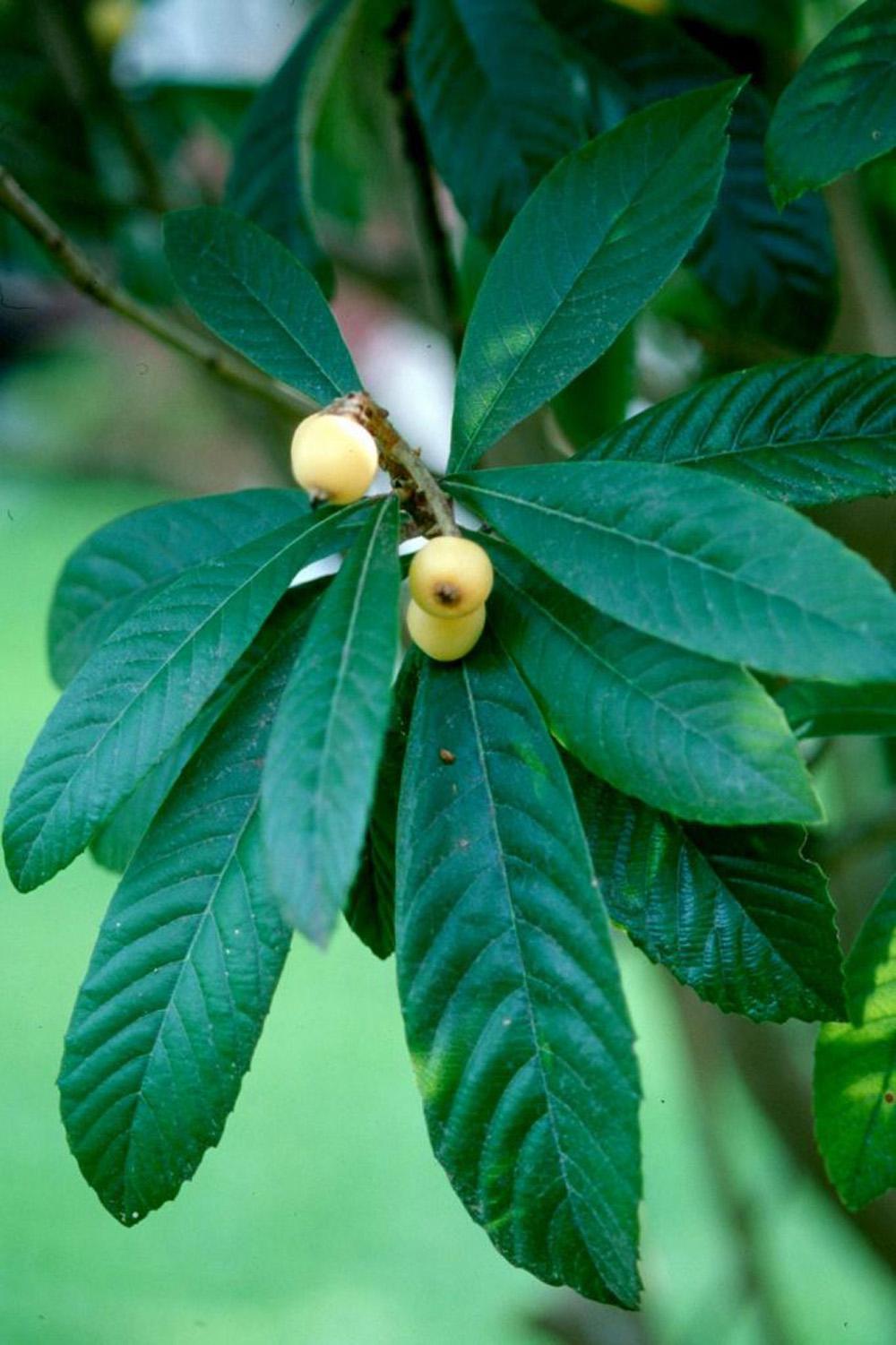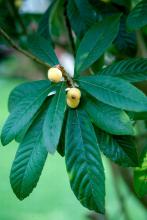Information Possibly Outdated
The information presented on this page was originally released on November 11, 2004. It may not be outdated, but please search our site for more current information. If you plan to quote or reference this information in a publication, please check with the Extension specialist or author before proceeding.
Japanese loquats blooming now
By Norman Winter
MSU Horticulturist
Central Mississippi Research & Extension Center
One of the most picturesque small trees is blooming all over Mississippi and filling the air with a tantalizing fragrance. If the winter is mild, the creamy white flowers will yield a real delicacy for the table. The tree I am talking about is the Japanese loquat, or Japanese plum, known botanically as Eriobotrya japonica.
This exotic-looking little evergreen tree has everything going for it: beautiful foliage, fragrant flowers and it is easy to grow. The loquat is perfect for those areas needing a small tree. It is normally under 20 feet tall and assumes a rounded form.
The large leaves are about 10 inches long and are a deeply textured, dark, glossy green on top, while the bottom surface is light green and slightly fuzzy.
The furry-looking white flowers form in the early fall and are deliciously scented. They perform best in full sun but will tolerate shady areas quite well. The soil should be well drained, and they can be grown in acidic or alkaline conditions.
Water regularly when the trees are young. Once established, they are drought tolerant, though adequate moisture and mulch will keep loquats looking their best. The loquat is in the rose family, and where I lived in Texas, it seemed they were prone to a little fire blight.
In Mississippi, they seem to perform without fail. I have been watching gardeners in Brookhaven grow them and regularly harvest the fruit for years. They have been used extensively in Brandon to produce photographic spots.
Use the loquat as a specimen plant and as a shade tree for the patio or courtyard. Growing in a protected area does increase your chance of harvesting in the spring. They are easy to grow and practically maintenance free. The fertilization needs are low, which helps prevent disease.
The loquat can be grown from zones 7 to 10, but obviously, because the fruit has to go through the winter, you are much more likely to get a harvest in Hattiesburg than in Tupelo.
Most garden centers sell the loquat generically, so to speak. In fact, I have never seen a named variety for sale. Some of the preferred varieties in the trade are Advance, a compact self-unfruitful variety requiring a pollinator; Golden Nugget; Fletcher Red, which has orange-red flesh; and Thales.
If you are among the lucky ones who get to harvest loquats, you might want to try this recipe:
Spicy Loquat Sauce
Wash 4 quarts of fresh loquats, halve fruit and discard seeds. Place in a deep pan; add water to partially cover. Cover pan and bring water to a boil. Boil gently until fruit is tender, about 30 minutes. Remove from heat and let cool. Puree fruit by pressing it through a food mill, colander or sieve. Add ground cinnamon and nutmeg to taste. Add a little sugar if desired.
Place the mixture in a saucepan, and bring it to a boil. Pour into hot, sterilized jars. Seal and process in boiling water for 15 minutes. Serve the sauce chilled on roasted meat or duck.








